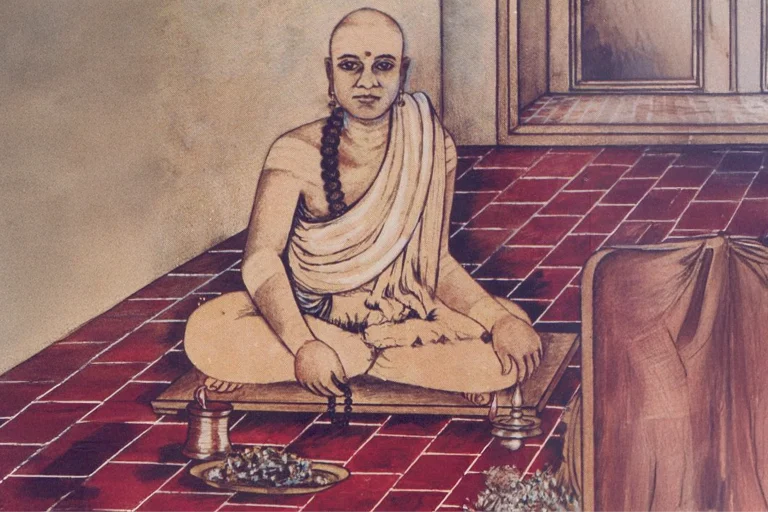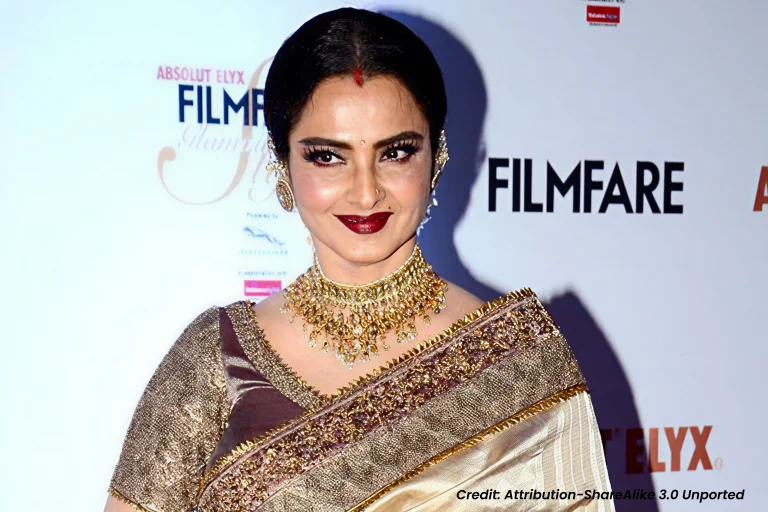All Topics
- Alchemizing Music Concepts for Students
- Artist Spotlight
- artium gift card
- Artium Maestros
- Artium News
- buying guide
- Carnatic Music
- Devotional Music
- Editorials by Ananth Vaidyanathan
- Film Music
- Guitar
- Hindustani Classical Music
- Indian Classical Music
- Indian Folk Music
- Insights
- Instruments
- Karaoke Singing
- Keyboard
- Kids Music
- maestros
- Music Education
- Music for Kids
- Music Industry
- Music Instruments
- Music Legends
- Music Theory
- Music Therapy
- Piano
- piano guide
- Success Stories
- Tamil Film Music
- Telugu Film Music
- Time Theory
- Tools
- Uncategorized
- Vocal Singing
- Vocals
- western classical music
- western music
- Western vocal music
S. D. Burman: The Legend, The Composer, The Voice of an Era
S. D. Burman: The Legend, The Composer, The Voice of an Era

Table of Contents
Do we know why Ramesh Tendulkar named his legendary son Sachin Tendulkar? Ramesh ji was a big fan of the Doyen of Indian film music, Sachin Dev Burman, popularly known as S.D. Burman (1 October 1906 – 31 October 1975) was born into the royal family of Tripura. His first personal record was released in 1932. He started his career as a singer with the Bengali film Sanjher Pidim (1935). He learnt under the famous musician Krishan Chandra Dey. Inspired by the creative work, he moved to Mumbai in 1944.
The journey of a different melody has begun in the world of the Bollywood film industry, a combination of the earthy touch of folk songs and the bond of classical melodies. The folk music of the Baul and Bhatiali traditions had a strong influence on his unique sound. His song “Sun Mere Bandhu Re” from Sujata (1959) is considered the first instance of Bhatiali folk music being used in a Hindi film.
Top 10 Bollywood Songs Composed By S.D. Burman
His compositions have been sung by legendary artists such as Kishore Kumar, Lata Mangeshkar, Mohammed Rafi, Geeta Dutt, Manna Dey, Hemant Kumar, Asha Bhosle, Shamshad Begum, and Mukesh, among others.
As a playback singer, SD Burman sang 14 Hindi and 13 Bengali film songs. He has created the music for over 100 films. Some of them are:
Kaagaz Ke Phool (1959)
Song -Waqt Ne Kiya Kya Haseen Sitam,
Sung by Geeta Dutt.
Guide (1965):
Song- Wahan Kaun Hai Tera
Sung by Burman himself
Aradhana (1969):
Song- “Mere Sapnon Ki Rani” and “Roop Tera Mastana”.
Sung by Kishore Kumar
Abhimaan (1973): Song- “Nadiya kinare”, “Ab to hei tumre”, “Piya bina Bansiya”, “tere mere milan ki”, “Lute koi Man ka najar”, “ Teri Bindiya re.” Sung by Lata Mangeshkar, Kishore Kumar, Mukesh, and Mohd Rafi, all legends on their own.
Additionally, among the legendary singers who have enriched Indian cinema with their songs, the following 10 are listed below.
Mukesh
O jaanewale ho sake to laut ke aana
The song “O jaanewale ho sake to laut ke aana” is a timeless classic from the 1963 film Bandini. Shailendra wrote the lyrics for this song. The lyrics are a heartfelt and sorrowful plea to a loved one who has left, asking them to return if possible. This song was sung by the legendary playback singer Mukesh. Mukesh had a soulful and melodic voice.
Mukesh‘s deep voice plays a pivotal role in creating a soulful mood in this song, which is perfectly suited to this melancholic tone. The song is featured on Nutan. The song is even more impactful in the way it reflects the pain in Nutan’s heart through her sorrowful eyes.
And it is expressed appropriately in the composition of the song and the perfect presentation in Mukeshji’s emotional voice. This song clearly demonstrates how composition becomes expression, revealing the brilliance of S.D. Burman.
Suman Kalyanpur
Chodo chodo mori baiyyan saware
S. D. Burman composed this song for the film Meri Biwi Raazi in 1960. A classic folk melody inspired this song. He masterfully blended folk and classical influences in his work. This song is also written by Shailendra and sung by a renowned Indian playback singer, Suman Kalyanpur. S. D. Burman possessed a deep knowledge of the genre, and this song was embellished with the same ornamentation, making it a perfect fit for Suman Kalyanpur’s skillful voice. The song is picturized on the actress Kamini Kadam.
Geeta Dutt
Tadbeer se bigdi hui taqdeer
The song “Tadbeer se bigdi hui taqdeer bana le” is a famous song from the Hindi film Baazi, which was released in 1951. It is a dynamic party song. Geeta Dutt sung this song. Geeta Dutt was a versatile singer, possessing a dynamic voice and the ability to perform both emotionally charged and upbeat tracks. S.D. Burman has crafted a memorable song by blending Geeta Dutt’s expressive vocal propulsion with the appropriate melody.
This song is a cabaret-style number. Sahir Ludhianvi wrote this song. From 1951 to 1957, their collaboration produced some of the most iconic songs in movie history with lyricist Sahir Ludhianvi and music director S.D. Burman, Sahir, was one of the most creative poets. The song was featured in a club setting, the famous number enacted by Dev Anand and Geeta Bali. This was SD Burman’s first tryst with the maestro Guru Dutt.
Shamshad Begum
Saiyyaan dil me aana re
The song “Saiyyan Dil Mein Aana Re” is from the 1951 Hindi film Bahar. It is celebrated for its playful tone and vintage charm in a classic track. The lyricist at this time was Famous Rajinder Krishan. Renowned singer Shamshad Begum sang this song. She was one of the first and most versatile playback singers in the golden era of Hindi cinema.
Her voice and style are deeply rooted in the musical traditions of India and the Punjabi folk. The graceful Vyjayanthimala, who performs the song with energy and charm.
This song, “Saiyyan Dil Mein Aana Re,” is a masterpiece by SD Burman, featuring a sweet and expressive melody that harmonizes with its fast rhythm and lyrics. Shamshad Begum had a successful working relationship with S.D. Burman produced many hits during the 1940s and 1950s. For the 1949 film Shabnam, she sang the popular multilingual song “Yeh Duniya Roop Ki Chor” with music by SD Burman.
Manna Dey
Tere naina talaash Kare
This song belongs to the 1969 film Talash. Lyricist Majrooh Sultanpuri was a highly respected lyricist of the golden age of Hindi cinema. Manna Dey sings this song. The song is a raga-based composition that showcases Manna Dey’s skill, and it can be said that S. D. Burman’s achievement lies in this aspect. This composition is a harmonious creation in the mood of the “Mishra Chhayanat” raga. SD Burman’s knowledge and skill in raga music are evident in his composition, instrumentation, and application of rhythm. Manna Dey was a legendary playback singer known for his mastery of both classical and modern music. So this song is a worthwhile application in that sense. The song is picturized on the film’s lead actor, Rajendra Kumar. The use of Pakhwaj and Sarad in harmony with the Bharatanatyam dance in the scene makes this song even more unique.
Hemant Kumar Or Hemanta Mukherjee
Jaane wo kaise log the jinko pyar se
The song “Jaane Woh Kaise Log The” is an influential and iconic track from the 1957 Hindi film Pyaasa. Sahir Ludhianvi wrote the powerful and thoughtful lyrics. The lyrics of the song, which express the feelings of those who receive love and those who do not, blend perfectly with the melody. This song is sung by the legendary singer Hemant Kumar, also known as Hemanta Mukherjee, in the eastern part of the country.
It is considered perfect for conveying the song’s intense emotions in his rich and soulful voice. Hemant Kumar possessed a rich, deep, and smooth voice that was immediately recognizable and had a hypnotic quality. His voice was inherently soft and tranquil, making it perfect for melancholy songs as well as soothing romantic and classical tracks.
His melodic voice and S.D. Burman’s composition has created a memorable masterpiece that people have remembered for years. S.D. Burman composed this song in a minimal arrangement with a profound resonance. Guru Dutt directed this classic film. The song is famously picturized on the film’s lead, Guru Dutt, as his character reflects on the loneliness of his life. The music is known for its deep, melancholic, and introspective mood, reflecting on unrequited love.
Lata Mangeshkar
Megha chhaye aadhi raat
The song “Megha Chhaye Aadhi Raat” is a classic Hindi song from the 1971 film Sharmilee. S. D. Burman composed the song in the Indian classical Raag Patdeep (Mishra) in Roopak taal. Inspired by the melody of Rabi Thakur’s song, he added a new twist to the melody in the antara. This song is sung by the legendary playback singer Lata Mangeshkar. Lataji’s melancholic and skillful classical dynamic voice perfectly expresses the mood of this song. Neeraj was a noted lyricist of the era.
The song is picturized on the actress Raakhee. On the one hand, he has highlighted the sorrowful expression of the heroine’s mind through the song’s melody, and on the other hand, he has created an interlude that suits the heroine’s happy memories. This is the uniqueness of S.D. Burman, who crafted music according to mood in the most appropriate way.
Asha Bhosle
Baithe hain kya uske paas
The song “Baithe Hain Kya Uske Paas” is from the 1967 film Jewel Thief. Lyricist was Majrooh Sultanpuri. This song featured on Helen. Helen, known for her electrifying dance numbers, performs this cabaret-style song with her signature energy and flair. Asha Bhosle sang this song.
Her specialty in dance numbers is defined by her incredible vocal range, versatility, and energetic delivery, which bring a modern, spirited quality to Bollywood’s most iconic party and cabaret songs. This collaboration between Helen and Asha Bhosle is a famous combination in the first number of Hindi film music. Despite the outstanding skills of the classical genre, Asha Bhosle has sung this song in a distinct style, and S. D. Burman is the creator of that extraordinary masterpiece. The scene also features the film’s lead, Dev Anand.
Mohammad Rafi
Dekhi zamaane ki yaari
The song “Dekhi Zamaane Ki Yaari” is an influential and iconic number from the 1959 Hindi film Kaagaz Ke Phool. Mohammed Rafi sang the song. His emotional and heart-wrenching vocals are considered one of the highlights of his career. He has enriched the song with the emotional expression of the extraordinary melody and ornamentation as needed in his classical voice. S.D. Burman created a haunting and melancholic tune that beautifully complements the song’s tragic lyrics.
The lyricist was Kaifi Azmi. The lyrics are deeply poetic and philosophical in nature. The song featured on Guru Dutt. The song depicts a disillusioned film director as he walks through an empty film studio. This song showcases the pain of loneliness, and the composition by SD Burman, paired with Mohammad Rafi’s emotionally rich and melodious voice, has made it even more meaningful.
Kishore Kumar
Badi sooni sooni hai
This song is from the famous Hindi film Mili, in 1095. This song is especially significant as it was one of the last compositions by SD Burman. Kishore Kumar sang this song in his legendary deep voice. The sense of loneliness and emptiness is expressed in his singing. This composition is one of his final works and showcases S.D. Burman’s ability to create a deeply emotional and touching melody.
Yogesh wrote the lyrics, reflecting a profound sense of despair and sorrow. The song is picturized on Amitabh Bachchan. This is a wonderful creation of S.D. Burman, sung in Kishore Kumar’s soulful, melodious voice.
Tribute
S.D. Burman not only composed the tunes in harmony with the lyrics, but also created a meaningful harmony between the songs, sung by different legendary artists. In addition to his classical and musical skills, he possessed the ability to understand the mood of lyrics and scenes.
The legacy that S.D. Burman has contributed significantly to Indian film music, portraying music in a unique, fairy-tale style that will be remembered forever by his successors and film music fans.
In Retrospect
The melodies composed by S.D. Burman in Indian film music represents a new direction for the next generation. Artium Academy teaches Bollywood music, and the course includes various genres of songs by S.D. Burman.
Our Academy’s students continue to carry that legacy through expert curriculum and teaching by experienced teachers. Artium Academy teaches different genres and styles of Bollywood film music. The motto of Artium Academy is “We Will Make You Perform”.
This motto emphasizes the academy’s focus on performance-based learning, which it implements through opportunities such as the weekly “Artium Showcases,” where students perform live; the annual “Artium Superstar” musical talent hunt; and the chance for students to release original music through “Artium Originals,” among others.
Artium Academy offers courses in various film music genres, including Hindi and Tamil film music. It is a prominent online music education platform based in India. To sing all types of essential film songs, from classical to folk styles, a student needs to know about the composer as well as the singer and lyricist. We are committed to moving forward with the success of students, keeping in mind the evolution of the golden era songs.
FAQs
S.D. Burman was an influential composer of Indian film music, combining classical and folk styles, and is known for his unique blend of traditional and contemporary Indian music. His various experiments with music were followed by subsequent composers, both before and after independence. His vision and uniqueness in combining melody, lyrics, and lyrics naturally acknowledge his influence in the world of Indian Film music.
Among all the timeless creations that S D Burman has given us, the following deserve special mention: from Pyaasa (1957) such as “Hum Aap Ki Aankhon Mein,” “Jaane Woh Kaise Log Thhe; from Kaagaz Ke Phool, 1959; from Sohlva Saal “Hai Apna Dil To Aawara”; from Abhimaan “Piya Bina Piya Bina” and “Tere Mere Milan Ki Yeh Raina”; from Aradhana (1969)”Mere Sapnon Ki Rani,” “Kora Kagaz Tha Yeh Man Mera,” and “Roop Tera Mastana.” etc.
Through simple musical arrangements, he combined the feel of folk songs with the ornamentation of classical music. Born into a royal family in Tripura, SD Burman received rigorous formal training in Hindustani classical music under esteemed gurus such as K.C. Dey, Ustad Badal Khan, and Ustad Allauddin Khan.
This expertise allowed him to compose intricate tunes rooted in specific ragas while maintaining melodic purity. A notable example is the Manna Dey song “Poochho Na Kaise Maine”, which is based on the morning raga Ahir Bhairav. His compositions blend the Bhatiali and Baul styles of rural Bengal.
S.D. Burman collaborated memorably with a wide range of legendary singers, tailoring his compositions to their unique strengths – Mohammed Rafi, Kishore Kumar, Lata Mangeshkar, Asha Bhosle, Geeta Dutt, and Manna Dey.
S.D. Burman’s musical legacy influenced modern Bollywood composers. His fusing of genres, minimalist arrangements, and the dominance of melody have repeatedly made the mood and situation of the song expressive. RD Burman has expressed his gratitude for following in his father’s footsteps in many interviews. What inspires a filmmaker to create in this new genre? Burman was a pioneer in blending indigenous Bengali folk and Indian classical music with subtle Western arrangements. This fusion approach has become an inspiration for modern Bollywood, with composers like A.R. Rahman and Shankar-Ehsaan-Loy.
Yes, Artium Academy offers specialized online classes in Hindi film music that cover the learning and performance of old Bollywood songs. These courses are designed to incorporate a blend of classical music foundations and performance techniques, making them ideal for students interested in a wide range of Bollywood music, including classics from past decades.
Among the creations of S.D. Burman, we teach the learners here the songs that are many from them. Songs of various levels are taught here, ranging from beginner to advanced. Here is the opportunity to learn S.D. Burman’s songs at the Artium school of music.






